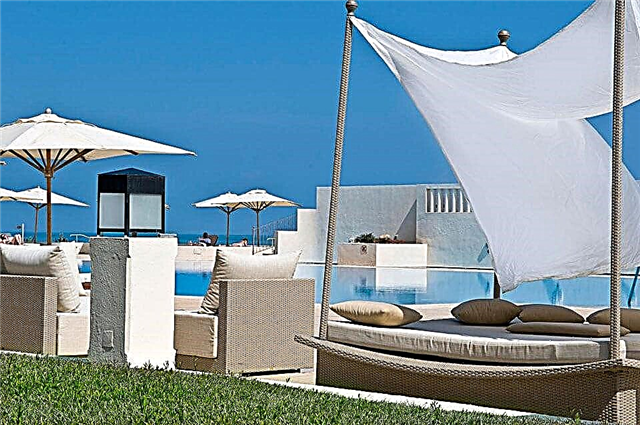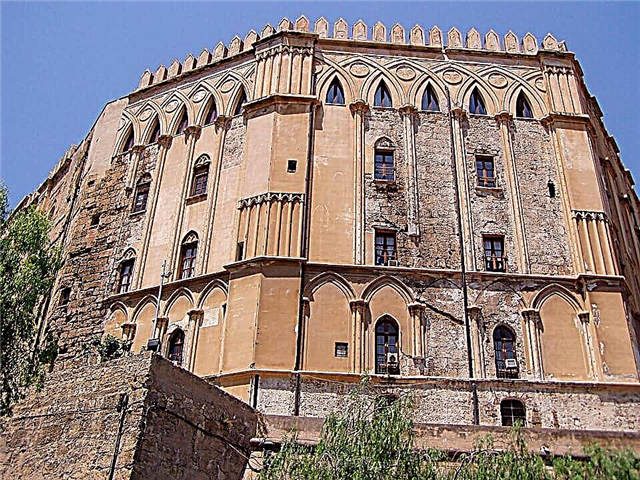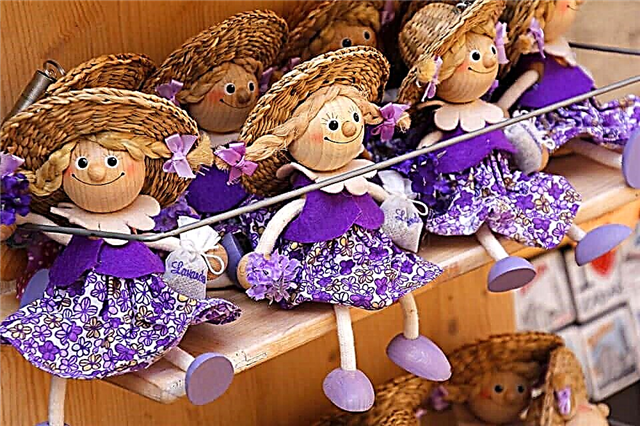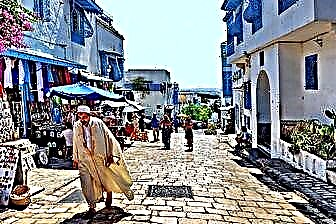Tunisia is a small North African country with access to the Mediterranean Sea. This state has everything for a quality beach holiday: a long coastline, comfortable hotels in the cities of Sousse, Hammamet and Monastir, working on an all-inclusive basis, evening and night entertainment offered by clubs and restaurants in resort areas.
On the territory of Tunisia, many historical monuments have been preserved from the period of the rule of the Phoenicians, the Roman Empire, the accession of the Arabs and the rule of the Ottoman Empire. The legacy of the French colonialists has a great influence in the country, thanks to which Tunisia remains a modern and progressive country developing along a secular path.

Popular hotels at affordable prices.
from 500 rubles / day
What to see in Tunisia?
The most interesting and beautiful places, photos and a short description.
Ancient city of Carthage
The capital of the ancient Phoenician state, founded in 814 BC. Until 146 BC. was the largest and most influential city in the entire western Mediterranean. After it was conquered and destroyed during the Punic Wars, it lost its significance. The remains of Carthage are located near the capital - the city of Tunisia.

Amphitheater in El Jem
Roman amphitheater built in 238, which was the largest in Africa and was only slightly inferior in size to the Colosseum. Despite the destruction of previous centuries, the structure has come down to us in a well-preserved form. Under the main arena there is a whole underground city, where wild animals and fighters preparing for battle were kept during the days of gladiators.

Sidi Bou Said City
Small picturesque town 17 km. from the capital. The architecture of the buildings follows the patterns of traditional Arab settlements. Since 1915, according to the decree of the authorities, it was forbidden to build modern buildings here, so as not to violate the authentic appearance. For tourists, Sidi Bou Said is a tourist attraction, for locals it is just an ordinary city.

Sahara Desert in Tunisia
This huge desert occupies almost 30% of the state's territory. Its endless expanses are almost not inhabited, only Bedouin tribes periodically wander from place to place. The Sahara is a popular place among tourists - jeep safaris and excursions to Bedouin settlements are arranged here.

Bardo National Museum
The museum complex in a beautiful old building of the 17th century. in the suburbs of Tunis. Along with the National Museum of Egypt, it is considered the best and largest in North Africa. In 12 rooms, exhibits from different eras are presented, telling about the Phoenician, Roman, Christian and Arab past of the country.

Dugga ancient city
The ruins of an ancient Roman city, where more than 25 thousand people lived centuries ago. Well-preserved temples, theaters, fountains, necropolises and mausoleums have survived to this day. On the stone pavements, there are even traces of chariots that once passed through here. A visit to Douggie can provide a comprehensive insight into the life of a large ancient city.

The ancient city of Kerkuan
Remains of a Punic settlement of the 6th century BC. This is the only surviving example of Phoenician-Punic architecture, therefore it is of particular historical value. The city was destroyed by the Romans in the 3rd century. BC, the ruins were discovered already in the XX century. Kerkuan is included in the UNESCO heritage list.

Gellala village
Located in the south of the island of Djerba. This is a settlement of local artisans who communicate with each other in the Berber language and make clay products using old technologies. There are about 450 workshops in the village where pots, jugs, dishes, spice containers, vases and vessels are made.

Cave city of Matmata
Berber city, where the older generation of this nomadic people lives in the caves. The rooms are dug right into the rocks, some of the "houses" are two- and three-story. This method of housing construction was dictated by the harsh desert conditions. During unbearable heat and sandstorms, cave dwellers feel quite comfortable inside their homes.

Medina of Tunis
It is the historical center of the capital city of Tunisia. It is an interweaving of old squares, market stalls, narrow stone streets and traditional neighborhoods where the unknowing can easily get lost. In Medina, you can admire cozy courtyards and ancient mosques that have stood here for more than one hundred years.

Cathedral of Saint Vincent de Paul
The Christian Cathedral of Tunisia, located opposite the French embassy. The cathedral was built twice - in 1881 and in 1893, since during the first construction some geological features were not taken into account and the building collapsed. The building is owned by the Catholic Church under a 1964 treaty.

El Ghriba synagogue
Jewish temple on the island of Djerba, one of the oldest shrines in the world. Its age is more than 2000 years, Jews from all over the world make pilgrimages to these places. The synagogue contains a manuscript of one of the most ancient sacred Jewish books - the Torah. The relics of Saint Shimon Bar Yaskhai (the author of the Talmud) are also buried here.

Mausoleum of Habib Bourguiba
Tomb of the first president of independent Tunisia, located in Monastir. Thanks to H. Bourguiba, the country became independent from France in the middle of the 20th century. It is an imposing building in the traditional Maghreb style - a large gilded dome, tall minarets and Moorish aisle arches.

Ukba Mosque
One of the largest mosques in Tunisia, located in Kairouan. The history of the temple began in the 7th century, when the first small building was erected under the supervision of the Arab commander Uqba ibn Nafi. For a long time, Uqba was a place of pilgrimage for Muslims who could not get to Mecca. According to one of the ancient fatwas, visiting this mosque seven times was equal to one visit to Mecca.

Al-Zaytun Mosque (Olive Mosque)
The main mosque of the country and the only temple to which representatives of other religions are open. In the XII-XIV centuries. the building housed the University of Islamic Law and the Study of the Koran. At the lectures in the spacious prayer hall, 10 thousand listeners gathered. This is the oldest and most revered mosque in the city of Tunis.

Ribat Fortress in Monastir (Ribat Hartem)
The construction of the 8th century, which served as protection against attacks from the sea and land. This powerful structure has been fairly well preserved thanks to repeated restoration in recent years. Now tourists are allowed into the fortress, who can admire Monastir and its surroundings from the upper viewing platforms.

Fortress Ribat in Sousse
It also served to protect against attacks by Berbers from the desert and gentiles from the sea. Ribat was built in the form of a square with semicircular towers on the sides. The fortress gave shelter to travelers and merchants fleeing danger. One of the watchtowers offers a picturesque view of the seaport of Sousse and the old town.

Fortress Kelibia
The oldest city-fort, built in the V-III centuries. BC, is the same age as Carthage. Located 100 km. from the capital of the country. In addition to its historical value, tourists are attracted by the best Tunisian beach El Mansour and excellent restaurants serving seafood located here.

Phrygia Zoo
One of the most visited places by tourists is located in the suburbs of Hammamet. It contains over 50 species of birds and animals. Guests can admire the African fauna: flamingos, lemurs, crocodiles, cheetahs, lions and swans. It will also be interesting to look at the shows with the participation of dolphins and seals.

Atlas mountains
A mountain system that begins in Tunisia and continues along the Algerian and Moroccan coasts.The highest peak of the chain is 4000 meters high. Coniferous forests grow here, waterfalls rustle and deep canyons gape with an abyss. Observation platforms in picturesque places are equipped for tourists.

Ishkol National Park
A small nature reserve, most of which is occupied by Lake Ishkol. It was created with the aim of preserving the unique ecosystem of the reservoir and surrounding areas. Several species of migratory and waterfowl winter here. The nature reserve delights the eye with a typical Mediterranean landscape: olive and pistachio groves, juniper bushes and acacia.

Djerba Island
A famous resort and the warmest place in Tunisia. Due to the fact that Djerba is located south of the main tourist areas, the water and air are always a couple of degrees warmer here, the season lasts a little longer. The infrastructure of the island is well developed - it offers restaurants, modern hotels and a variety of entertainment.

Lake Shott El Jerid
A huge lake covered with salt crust. Its area is almost 250 km². The reservoir is famous for the fact that bizarre salt crystals shimmer in different colors depending on the angle of the incident sunlight. It is a picturesque and breathtaking sight; locals and guests alike love to visit the lake in winter, when it is already cool in the north of the country.

Remnants of the Star Wars set
It was in Tunisia that episodes of the famous saga were filmed. In the Sahara Desert, George Lucas created the distant world of the planet Tatooine (named after a local town). Until now, the location of the filming has remained a grandiose set for the film, which has turned into a popular tourist attraction.

Souq al-Juma market
A typical for this area, a picturesque bazaar, where, after a fascinating bargaining, you can buy interesting ceramics, Berber jewelry, scarves, incense, spices and a thousand other useful things. The market is known for the fact that Tunisian potters have been selling their works here since the 16th century.












